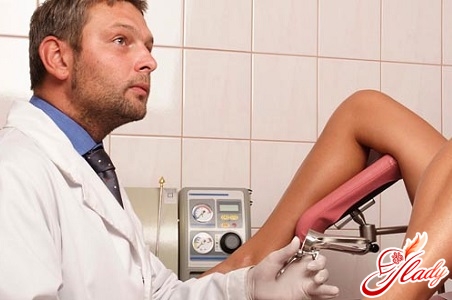
Adnexitis: symptoms and treatment
In gynecological practice, a leading positionAmong all diseases, adnexitis is the most dangerous. Its danger lies not only in the deterioration of a woman's quality of life, but also in the fact that adnexitis can contribute to the emergence of serious problems related to reproductive function. In most cases, adnexitis occurs in young women. According to medical statistics, every fifth patient of a gynecologist who has been diagnosed with this diagnosis continues to be treated, but for infertility. What is adnexitis Adnexitis refers to inflammation of the uterine appendages (ovaries, ligaments, fallopian tubes themselves). Adnexitis occurs in two ways: ascending or descending. With the ascending path, microorganisms penetrate the fallopian tube from the uterus, all layers become involved in the inflammatory process (salpingitis), and then in most cases, along with the ligaments, the ovary is also involved (oophoritis), therefore adnexitis has another name - salpingo-oophoritis. The occurrence of adnexitis by a descending route occurs secondarily from the abdominal organs, for example, with appendicitis. Most often, inflammation of the fallopian tubes and ovaries occurs simultaneously, so these processes occurring in the pelvis are considered as one. What is dangerous about adnexitis? The complexity of the disease lies in the almost asymptomatic course, which delays rapid detection and treatment. Adnexitis is dangerous due to complications. Most often, with complications of acute adnexitis, adhesions are formed between the uterus, ovary, tube, omentum, bladder, pelvic wall and intestinal loops in the pelvis. When infection gets into the ovarian tissue, purulent cavities are formed in it (when they merge, the ovarian tissue may melt). An ovarian abscess subsequently occurs. A distinction is made between chronic and acute adnexitis. In acute adnexitis, saccular formations with accumulation of pus appear due to the inflammatory fluid accumulating in the fallopian tube. Acute adnexitis has another complication - the so-called tubo-ovarian abscess, as a result of which the infection can penetrate into the abdominal cavity, which will cause inflammation of the peritoneum, and as a result, peritonitis with various abscesses. If chronic adnexitis is often aggravated, sexual disorders may occur: pain during sexual intercourse, decreased sexual desire. With improper therapy, acute adnexitis can become chronic, which mainly leads to ectopic pregnancy, infertility.
Adnexitis: causes of
Infection penetrating from the uterus into the fallopian tube, into the ovaries, is the main cause of adnexitis. Adnexitis, depending on the pathogen that caused the disease, is divided into:
- specific (for diphtheria, tuberculosis, gonococcal infections);
- nonspecific adnexitis (with genital infections such as trichomonads, chlamydia, ureaplasma, mycoplasma, with opportunistic flora: staphylococci, streptococci, E. coli).
Depending on the route by which the infection is transmitted:
- through lymphatic systems;
- through the blood, mainly occurs in patients with tuberculosis of genital organs;
- the descending path (infection penetrates the ovaries from the vagina, is more often observed in patients with sexual infections);
- Ascending route (infection penetrates from the upperdepartments, for example, lungs, kidneys). Even sore throat can provoke this disease. Against this background, there is a bilateral adnexitis, accompanied by inflammation of the uterus.
Of course, the presence of an infection does not always contribute to the development of adnexitis, since predisposing factors are necessary for the onset and progression of the disease. These are:
- various diseases of non-sexual nature (frequent sore throats, pyelonephritis, chronic tonsillitis);
- unhealthy lifestyle, frequent stresses (factors that weaken the immune system, allowing free spread of infection);
- overwork and hypothermia;
- non-observance of personal hygiene;
- carrying out intrauterine manipulations: examination of the uterine cavity with a hysteroscope, scraping for abortions, installation and removal of the intrauterine device;
- frequent changes in sexual partners.

Adnexitis and its symptoms
The course of acute adnexitis is accompanied by pain inlower abdomen, radiating to the sacral or lumbar spine. Sometimes the following symptoms and signs of adnexitis are encountered: fever within 38-40°C, muscle tremors with a feeling of cold, vomiting, nausea, urinary disorders, abdominal distension, purulent discharge from the genital tract. Palpation reveals sharp pain in the lower abdomen, a symptom of muscle protection may appear. In some cases, acute adnexitis is asymptomatic. The average course of acute adnexitis is 7-10 days. The outcome of acute adnexitis is mainly chronic adnexitis. The picture of symptoms (in comparison with acute adnexitis) is not so obvious. Women who have chronic adnexitis note that the pain concentrated in the groin and lower abdomen, radiating to the sacrum, thigh or anus, is not constant, but periodic. The pain may increase after hypothermia, stressful situations or before the onset of menstruation. Most often, adnexitis is accompanied by menstrual irregularities. Discharge becomes scanty, the interval between them increases (oligomenorrhea). Chronic adnexitis is manifested by periodic exacerbations due to weakened immunity, repeated infection, infection resistant to antibacterial therapy. Chronic adnexitis in the acute stage worsens the general well-being, there is an increase in temperature, increased pain, purulent discharge from the vagina appears.
Adnexitis and its treatment
Use of antimicrobial drugs,painkillers, broad-spectrum antibiotics, desensitizing and anti-inflammatory drugs are due to the severity of the pain syndrome that provokes adnexitis. After eliminating acute inflammatory processes, various biostimulants and physiotherapy (ultrasound on the lower abdomen, vibration massage, electrophoresis) are prescribed. Acute adnexitis is treated strictly in a hospital with bed rest. For chronic adnexitis, there are several types of therapy (antimicrobial, resolving, anti-inflammatory, immunostimulating). Chronic adnexitis is treated depending on the cause that caused it. In addition to drug treatment, physiotherapy is also carried out (electrophoresis, IFS, ultrasound on the lower abdomen, vibration massage). Adnexitis is treated with mineral water and mud, ozokerite applications (a product of petroleum passage). In various sanatoriums, adnexitis is treated after the main course of therapy. A woman should take this disease seriously and not forget about the consequences. Adnexitis is insidious because it can become chronic. Even if all the most alarming and vivid symptoms (pain, temperature) have passed, it is extremely important to cure adnexitis completely.
Medicines for adnexitis
Currently, adnexitis is treated with the following drugs:
- for oral administration - general antibioticsactions - ofloxacin, ofloxacin, siflox, bactrim syrup, bactrim forte, abactal, metronidazole, zomax (azithromycin), cedex (ceftibuten), erythromycin, cefaclor, doxycycline, cefuroxime;
- for local use - selective antibiotics - clindamycin, fluamisin, dalacin;
- anti-inflammatory drugs - diclofenac, voltaren;
- painkillers - analgin, paracetamol;
- douching solutions - miramistin, citeal, romazulan, vagotyl;
- means for the prevention of dysbacteriosis - fluconazole, bifidumbacterin, lactobacterin;
- immunomodulating drugs, means for restoring the body's defenses and vitamins (usually group "B");
- anti-intoxicants - calcium chloride and anti-allergic drugs.
Treatment of adnexitis in pregnancy
The disease can contribute to the formationso-called adhesions - thin ties inside the fallopian tubes and between organs, due to which the ovaries function worsens. All these factors can lead to infertility. Very often, several years are needed to treat adnexitis, but it is imperative to complete it, especially if pregnancy is planned. When pregnancy occurs against the background of adnexitis, the activity of the immune system decreases, as a result of which the infection worsens. Signs due to which adnexitis worsens during pregnancy are caused by the type of infectious agent. Basically, the patient is concerned about the discharge of altered leucorrhoea (purulent, bloody), pain in the lower abdomen. Particular attention should be paid to the situation in which infection and its development occurs during pregnancy, and not just an exacerbation of the inflammatory process already present in the uterine appendages. In most cases, this provokes intrauterine infection of the fetus. In this situation, the decision on the necessary measures is individual, depending on the specific case. An untreated infectious process affects the birth canal (vagina, external genitalia, cervix), which threatens to infect the fetus during childbirth. Even if the child has avoided contact with the infection in the womb, at this stage it is absolutely defenseless. In this state of affairs, doctors often insist on delivery by cesarean section. If the infection is caused by microorganisms that are pathogens of sexually transmitted diseases (gonorrhea, syphilis), specialists recommend terminating the pregnancy. When opportunistic microorganisms (candida, gardnerella) take the place of natural inhabitants of the genitals and if there is dysbacteriosis, the doctor prescribes treatment based on the sensitivity of the detected pathogens to antibiotics and the gestational age. Adnexitis can be prevented by observing the following preventive measures:
- protect the body from overwork and hypothermia;
- to carry out timely treatment of inflammations of female genital organs;
- prevention of abortion;
- choose the best type of contraception of the modern generation, safe sex;
- timely identify and treat sexually transmitted infections (especially in the postpartum period);
- follow the rules of personal hygiene;
- to undergo a scheduled examination at a gynecologist every six months.
By following simple rules, you can be completely confident in maintaining your female health. Be healthy!









